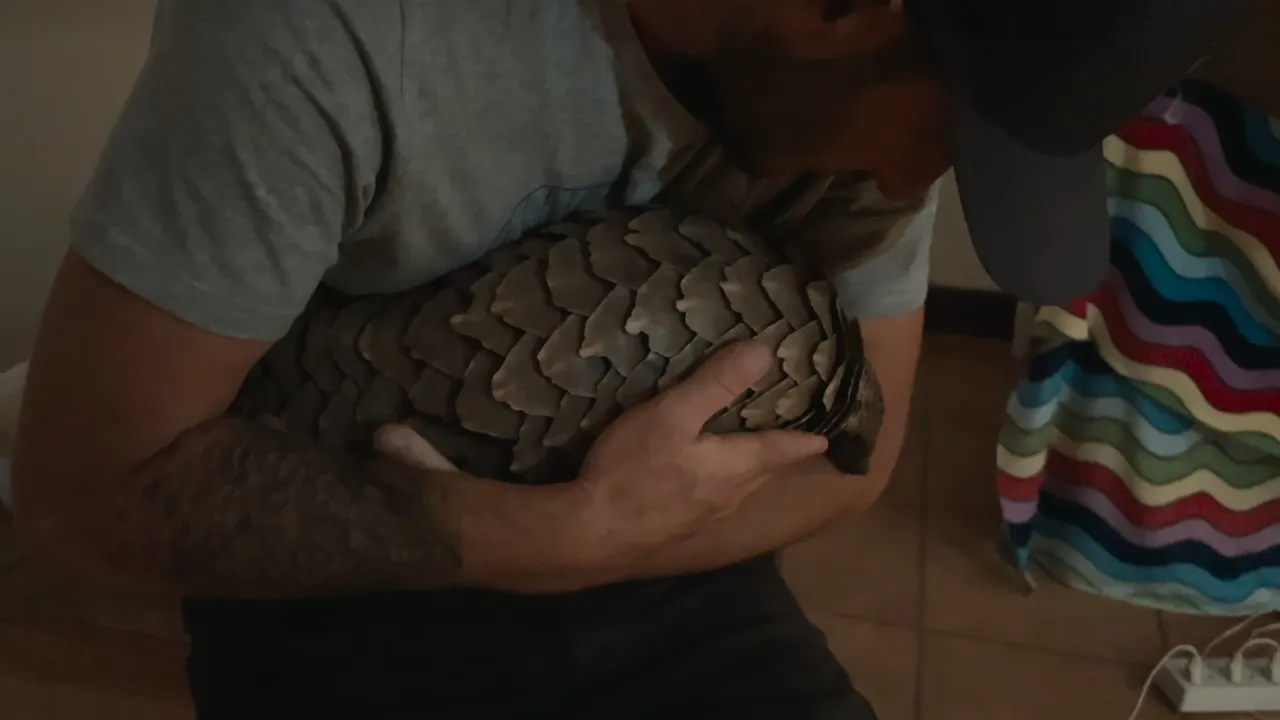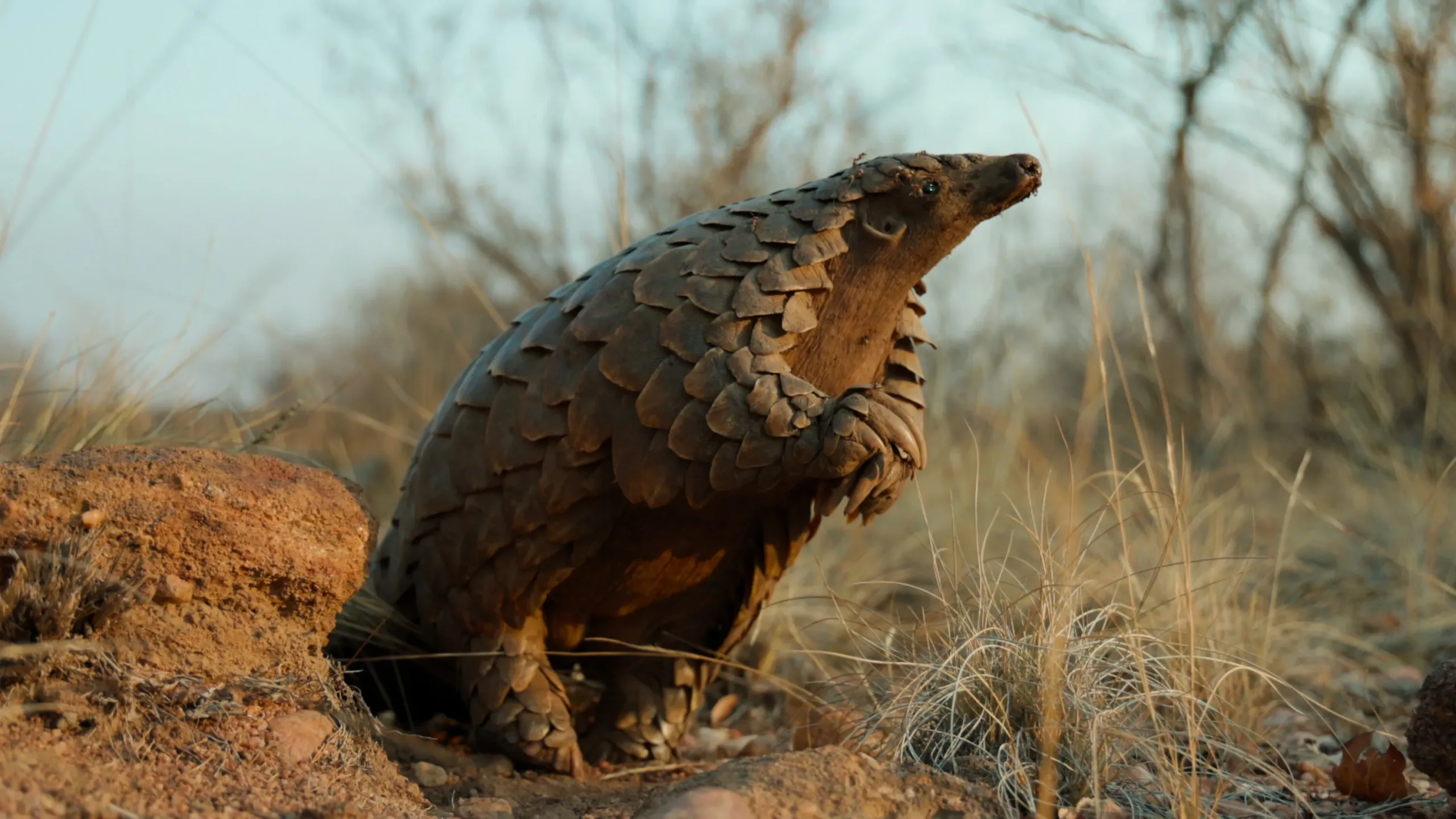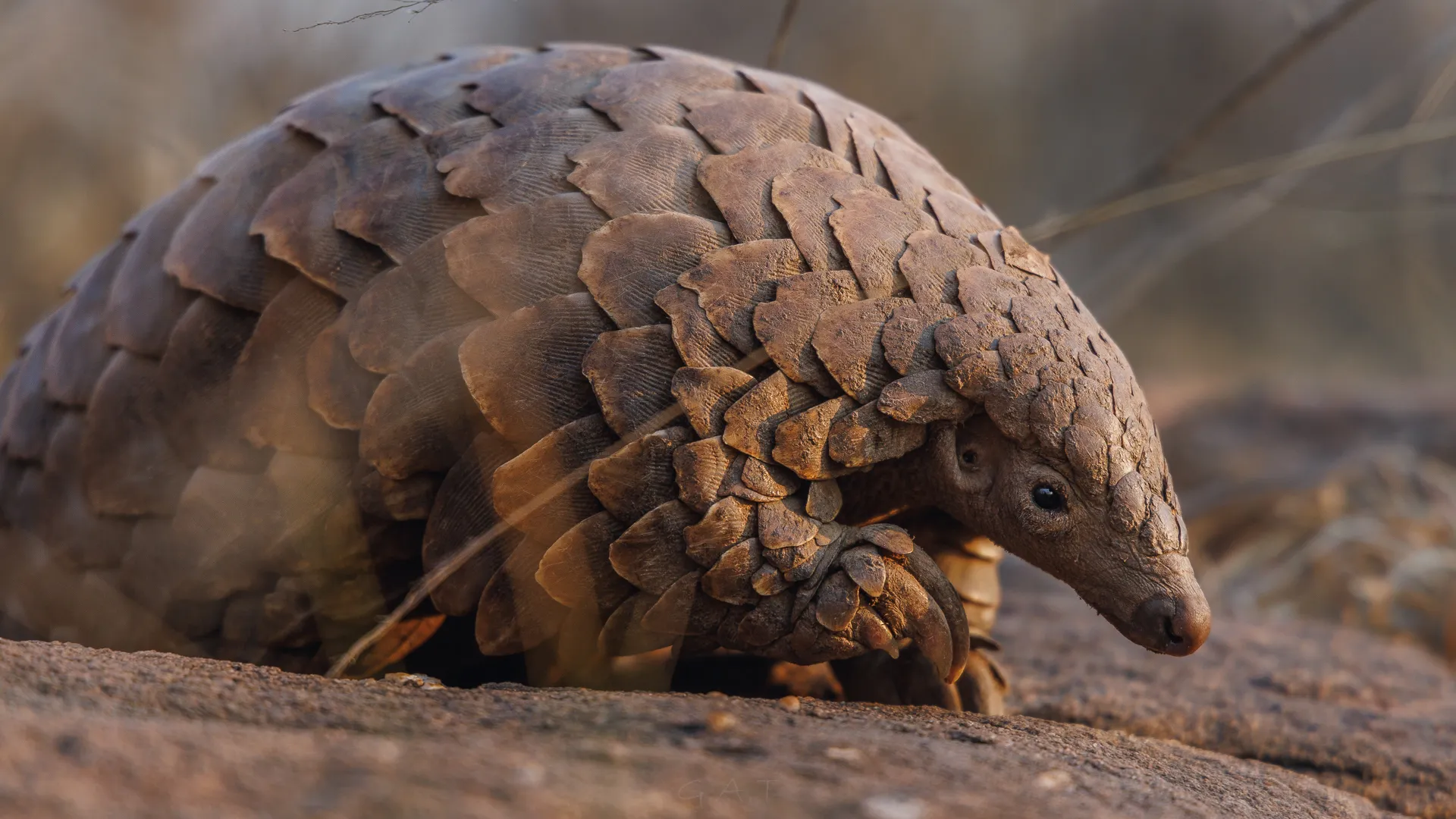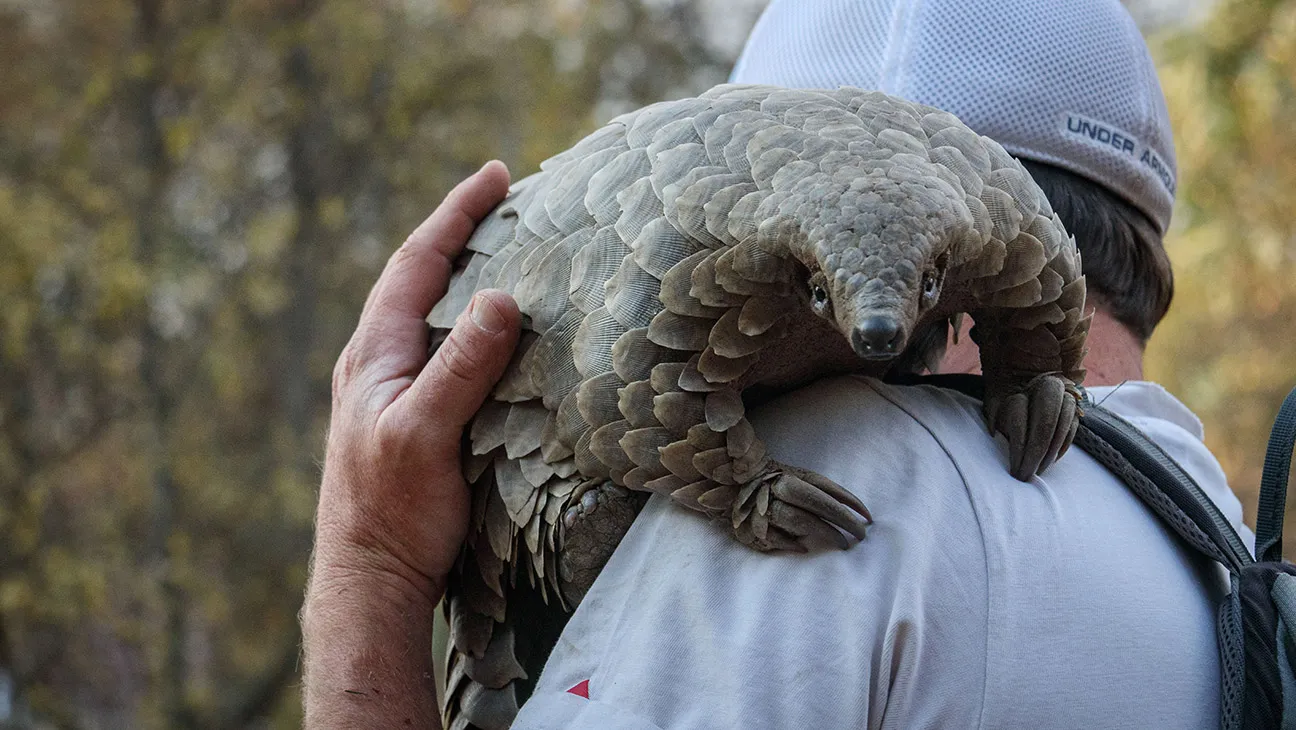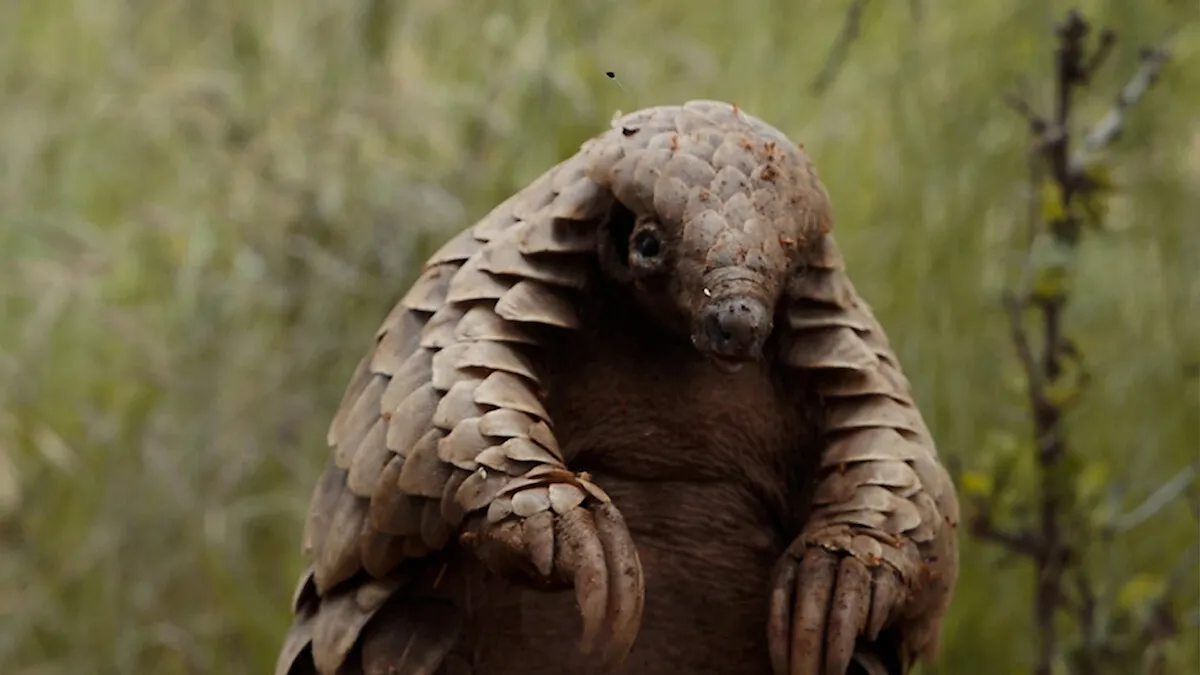A lone pangolin pup, newly christened Kulu, emerges from the shadowy world of wildlife trafficking into the careful guardianship of Gareth Thomas. Rescued by a sting operation and shuttled from Johannesburg’s veterinary wards to the vast expanse of the Lapalala Wilderness Reserve, Kulu becomes both subject and partner in a six‑month campaign of rehabilitation. Director Pippa Ehrlich, riding the acclaim of her Oscar win for My Octopus Teacher, turns her lens once more toward an unlikely protagonist, this time a scaly anteater whose armor and elegance feel almost prehistoric.
Released on Netflix on April 21, 2025, the film unfolds like a whispered parable: a study in trust, vulnerability, and the fragile boundary between salvation and abandonment. The visual language is lush—every glint on Kulu’s scales, every gust of golden light through the grasses rendered with painterly precision. Yet the focus remains on the intimate pulse of human commitment: Thomas’s early‑morning forays, his quiet vigilance at dusk. Expect an immersive experience that places the pangolin front and center, its silent struggles amplified by an evocative score and cinematography that linger on each tentative step toward freedom.
Armor Against Oblivion
Long before mammals roamed the plains, the pangolin carried its fortress of keratin plates through ancient forests. Tracing back roughly 85 million years, these scaled wanderers survived waves of change—dinosaurs, ice ages—yet today teeter on the brink of disappearance. Their anatomy reads like a myth: a slender, retractable tongue capable of probing insect galleries a foot beneath the soil; forelimbs tucked as if in perpetual prayer; a gait lifted on hind legs that evokes both vulnerability and primeval strength.
This film frames Kulu’s story against that deep heritage, a reminder that each pangolin embodies eons of adaptation. Yet modern appetites unravel that legacy. No other mammal endures trafficking on this scale—hundreds of thousands seized annually to supply traditional Chinese remedies. Precise headcounts elude researchers, but declining trend lines whisper extinction within decades if no action intervenes.
Enter the African Pangolin Working Group and its covert operations. Their sting teams, masquerading as buyers, intercept shipments before creatures vanish into the black market. Rehabilitation camps become sanctuaries of second chances, where every healed wound signals resistance against wholesale erasure. Beyond rescuing individuals, these efforts serve as a litmus test for ecosystem resilience: pangolins react sharply to shifts in insect populations, land use and predator presence. Their fate mirrors the health of entire landscapes. In watching Kulu adapt to a reclaimed wild, the film poses a wider question: can we restore the balance that kept these “ghosts” among us for tens of millions of years?
Storm and Sanctuary
The film opens under a roiling sky, lightning fracturing the darkness as raindrops patter against Kulu’s newly polished scales. This sequence evokes folklore of pangolins as cloud‑callers, creatures whose rattling armor summons thunder—a primal motif underscored by deep, resonant chords.
Next, the narrative shifts to a covert operation spearheaded by Professor Ray Jansen. Under flickering lamplight, wildlife detectives disentangle a young pangolin—named Gijima, or “run” in Zulu—from illicit crates. In the sterile confines of a Johannesburg veterinary ward, close‑up shots capture trembling limbs and tentative breaths, each frame offering stark evidence of the creature’s fragility.
With dawn comes the daily regimen. At 4 a.m., Gareth Thomas emerges, radio tracker in hand, to guide the undernourished pangolin toward termite nests. The camera lingers on the slow unfurling of a foot‑long tongue as it probes through soil, ant larvae erupting like tiny pearls.
Amid these feeding rituals, nocturnal instincts clash with daylight routines: Kulu’s hesitant steps, shadowed by the click of tracking devices, frame a delicate choreography of trust and restraint. Renaming him “Kulu,” meaning “easy,” becomes a quiet incantation—a hope draped over each careful hand‑feed and every gentle reassurance whispered at dusk.
Approaching release, suspense thickens. Radio pings fall silent for two‑and‑a‑half hours; later, days’ worth of signals vanish for nearly a week as Kulu slips into the tall grasses of Lapalala Reserve. Predator calls drift through the night, and electric‑fence wires cast phantom lines across the dusk. Then, as dawn breaks, a lone silhouette emerges—scales shimmering with dew—signaling both deliverance and the enduring uncertainty of true freedom.
In Quiet Complicity
Gareth Thomas arrives on screen as a man reshaped by chance and grief. A former poker player whose world unravelled after the sudden loss of two close friends, he turned to wildlife rescue in search of a new compass. He calls himself a “helicopter parent” to Kulu, eyes alert at every rustle in the underbrush, voice low with reassurance. That self‑portrait sets the tone for their bond—protective without smothering, attentive without intrusion.
Moments of trust emerge in small gestures. At dusk, Kulu curls beside Thomas at the mouth of a borrowed burrow while the volunteer watches over him, heartbeat matching that of his scaly charge. In daylight, Kulu’s tail loops around Thomas’s wrist in a fleeting show of comfort, a silent handshake across species lines. These sequences avoid cheap sentiment. The film resists draping human emotion over a wild creature; instead it anchors on gestures that speak of mutual recognition. The playful image of ant larvae dubbed “pangolin ice cream” adds a touch of levity without tipping into cartoonish anthropomorphism.
Emotional currents run deep beneath the calm surface. Thomas’s own vulnerability is laid bare in scenes where he pauses mid‑step, gazing at the scaly form he has come to cherish. Caring for Kulu becomes an act of healing, each weight gain and foraging success echoing steps taken out of personal grief. When release approaches, separation anxiety takes on universal resonance—this is attachment distilled to its essence, a reminder that caring involves both protection and letting go.
Ethical tensions underlie every frame. The film measures intimacy against the ultimate goal of wild independence, questioning how much closeness a wild being can withstand before its instincts fray. By sidestepping glossy Disney tropes, the story holds onto a rigorous honesty: affection need not erase wildness, nor respect require emotional distance.
Between Stillness and Scale
Camera work in this film feels almost conspiratorial—silent observer rather than intrusive eye. Gareth Thomas, credited alongside Pippa Ehrlich, captures Kulu’s world through tight, intimate framing: each delicate scale ripple in a sunlit puddle, every cautious step along a termite mound rendered with crystal clarity.
When the light dips, magic‑hour glow washes across the pangolin’s armor, turning mundane foraging into a ritual of color and texture. Water droplets shimmer like tiny prisms as Kulu emerges from a rain‑soaked burrow, the lens barely breathing to preserve authenticity.
Beyond the close‑ups, a patient panorama unfolds. Lapalala’s rolling grasslands roll into jagged ridges and shimmering wetlands, each ecosystem revealed in slow‑motion time lapses that trace clouds drifting overhead. Occasional glimpses of warthogs snuffling, aardvarks disappearing into burrows or honey badgers prowling at dusk enrich the canvas, reminding viewers of the delicate web that sustains a solitary scaly guardian.
Anne Nikitin’s score offers a subtle counterpoint—early scenes scored with gentle, chiming motifs that swell into full‑throated African vocals as stakes rise. Rhythmic percussion underscores moments of suspense, while plaintive strings accompany Kulu’s tentative steps.
Editing orchestrates a steady pulse: abrupt jolts of tension—electric‑fence shocks or predator calls—give way to quiet vignettes of mutual trust. Talking heads are sparse, reserved for experts like Dr. Caswell Munyai, whose voice emerges only when the narrative demands scientific context. This restraint in structure ensures that every cut, every note, every shot honors the film’s central promise: to let a creature of silence speak volumes.
Lessons Written in Scales
The pangolin’s anatomy unfolds like a natural manuscript: a funnel‑shaped snout sensitive enough to detect ant colonies a foot beneath the soil, a tongue that extends with millimeter precision to extract larvae, and keratin plates engineered for defense.
Watching Kulu push through earth, nostrils quivering in search of termite tunnels, reveals an ecosystem in miniature—each feeding session a testament to evolutionary refinement. Beyond solo foraging, pangolins engage in burrow‑borrowing, repurposing warthog and aardvark tunnels into cozy retreats, then reinforcing them with scrub and soil. This strategy highlights resourceful adaptation in habitats under pressure.
Scientific insights arrive sparingly but potently. Dr. Caswell Munyai’s observations on ant‑pangolin equilibrium illustrate a fragile balance: shifts in termite behavior ripple outward, affecting soil health and predator patterns. Nearby, lions, hyenas and honey badgers loom as silent adjudicators of survival, reminding viewers that every rescue counters a larger tide of extinction.
Interwoven with data are Venda and Zulu tales that cast pangolins as thunder‑bringers and rain‑summoners. These myths—once dismissed as quaint—gain gravitas when juxtaposed with modern threats. They frame Kulu’s journey as part of a cultural inheritance under siege, as urgent as the scientific warnings.
By placing these strands side by side, the film demands more than sympathy; it demands action. With estimates pointing to pangolin disappearance within two decades, the narrative extends an invitation: leverage Netflix’s reach, support field organizations, consider signatures or donations, or even explore pangolin‑walking volunteer programs. In the silence of scales lies a call to stewardship.
Tension Beneath the Scales
Barbed wires of electric fences stand as silent sentinels around the Lapalala Reserve, their hidden currents a constant menace to both rescuer and rescued. One moment, Kulu’s scales gleam beneath the sun; the next, a stray step unleashes a jolt that crackles through the dusk. As night falls, distant roars and padded footfalls of lions and leopards lend the darkness a sharpened edge, transforming each burrow check into a high‑stakes gamble.
When Kulu bolts, sprinting into the tall grass, the rhythm of the narrative quickens to a pounding pulse. Radio signals fragment in the moonlight, prompting hunts through tangled undergrowth. Each recovered pangolin—trembling, breathless—underscores the precarious choreography between instinct and intervention, as Thomas navigates both terrain and temperament to reel his charge back into safety.
Even after weeks of weight gains, setbacks lie in wait. Sudden drops in body mass send alarms through the team, revealing how fragile rehabilitation can be. Under‑eating or a brush with illness shifts the balance, reminding that the six‑month path to freedom is less a guarantee than a continuous negotiation with survival itself.
Final Bearings
Pangolin: Kulu’s Journey resonates with a tender urgency, each frame a study in both visual poetry and heartfelt advocacy. The film’s intimate footage—scales glimmering in dawn light, dew‑laden grasses parting before a foraging pangolin—carries unspoken lessons about fragility and resilience. Facts about feeding mechanics and trafficking statistics weave seamlessly into moments of genuine connection, offering an education as compelling as its imagery.
Moments of overt sentiment slip into the territory of sweetness, yet they never obscure the film’s core honesty. The bond between Thomas and Kulu feels earned, never contrived, even when the score swells to underscore emotional peaks.
A vivid appeal to anyone drawn to wildlife storytelling or conservation causes, Pangolin: Kulu’s Journey stands as essential viewing, its narrative a call to witness—and to act—before these ancient creatures vanish from our world.
The Review
Pangolin: Kulu’s Journey
Pangolin: Kulu’s Journey harnesses poetic visuals and genuine empathy to spotlight an urgent conservation story. Its intimate portrayal of Kulu’s rehabilitation, paired with elegant cinematography and measured scientific insight, transcends mild sentimentality to deliver a stirring call to action. A beautifully rendered, heartfelt documentary that both enlightens and moves.
PROS
- Intimate, unobtrusive cinematography captures Kulu’s world with delicate precision
- Seamless integration of scientific insight and cultural folklore
- Emotional resonance in the human–animal bond without overt sentimentality
- Lush soundscape featuring Anne Nikitin’s evocative score
- Clear call to conservation action
CONS
- Moments of heightened emotion verge on saccharine
- Early pacing can feel slow during rehabilitation setup
- Limited exploration of wider conservation initiatives beyond APWG
- Sparse expert commentary may leave some questions unanswered










































